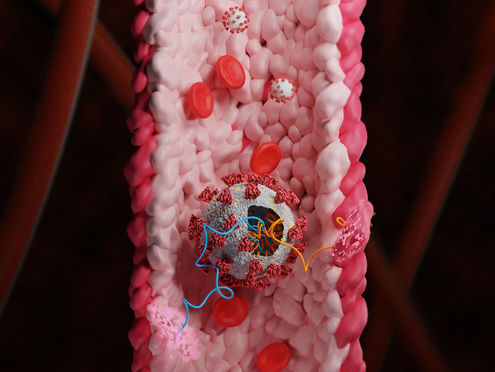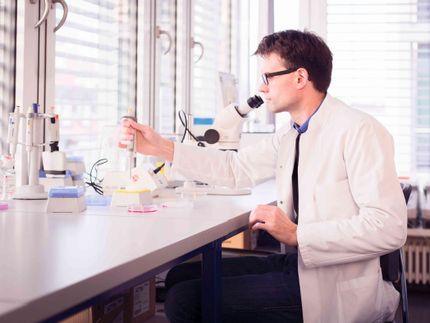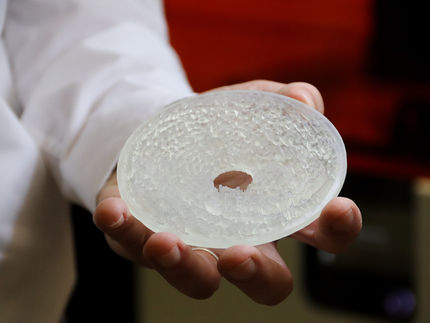Blood brain barrier gateway found
Cornell researchers may have solved a 100-year puzzle: How to safely open and close the blood-brain barrier so that therapies to treat Alzheimer's disease, multiple sclerosis and cancers of the central nervous system might effectively be delivered.
The researchers have identified that adenosine, a molecule produced by the body with many physiological functions including signaling trauma, can modulate the entry of large molecules into the brain. For the first time, the researchers discovered that when adenosine receptors are activated on cells that comprise the blood-brain barrier, a gateway into the blood-brain barrier can be established.
Although the study was done on mice, the researchers have also found adenosine receptors on these same cells in humans.
They also discovered that an existing FDA-approved drug called Lexiscan, an adenosine-based drug used in heart imaging in very ill patients, can briefly open the gateway across the blood-brain barrier.
The blood-brain barrier is composed of the specialized cells that make up the brain's blood vessels. It selectively prevents substances from entering the blood and brain, only allowing such essential molecules as amino acids, oxygen, glucose and water through. The barrier is so restrictive that researchers couldn't find a way to deliver drugs to the brain -- until now.
"The biggest hurdle for every neurological disease is that we are unable to treat these diseases because we cannot deliver drugs into the brain," said Margaret Bynoe, associate professor of immunology at Cornell's College of Veterinary Medicine and senior author of a paper appearing in the Journal of Neuroscience. Aaron Carman, a former postdoctoral associate in Bynoe's lab, is the paper's lead author.
"Big pharmaceutical companies have been trying for 100 years to find out how to traverse the blood-brain barrier and still keep patients alive," said Bynoe, who with colleagues have patented the findings and have started a company, Adenios Inc., which will be involved in drug testing and preclinical trials.
Researchers have tried to deliver drugs to the brain by modifying them so they would bind to receptors and "piggyback" onto other molecules to get across the barrier, but so far, this modification process leads to lost drug efficacy, Bynoe said.
"Utilizing adenosine receptors seems to be a more generalized gateway across the barrier," she added. "We are capitalizing on that mechanism to open and close the gateway when we want to."
In the paper, the researchers describe successfully transporting such macromolecules as large dextrans and antibodies into the brain. "We wanted to see the extent to which we could get large molecules in and whether there was a restriction on size," Bynoe said.
The researchers also successfully delivered an anti-beta amyloid antibody across the blood-brain barrier and observed it binding to beta-amyloid plaques that cause Alzheimer's in a transgenic mouse model. Similar work has been initiated for treating multiple sclerosis, where researchers hope to tighten the barrier rather than open it, to prevent destructive immune cells from entering and causing disease.
Although there are many known antagonists (drugs or proteins that specifically block signaling) for adenosine receptors in mice, future work will try to identify such drugs for humans.
The researchers also plan to explore delivering brain cancer drugs and better understand the physiology behind how adenosine receptors modulate the blood-brain barrier.
Most read news
Topics
Organizations
Other news from the department science

Get the life science industry in your inbox
By submitting this form you agree that LUMITOS AG will send you the newsletter(s) selected above by email. Your data will not be passed on to third parties. Your data will be stored and processed in accordance with our data protection regulations. LUMITOS may contact you by email for the purpose of advertising or market and opinion surveys. You can revoke your consent at any time without giving reasons to LUMITOS AG, Ernst-Augustin-Str. 2, 12489 Berlin, Germany or by e-mail at revoke@lumitos.com with effect for the future. In addition, each email contains a link to unsubscribe from the corresponding newsletter.
Most read news
More news from our other portals
Last viewed contents
Basilea receives milestone payment from distribution agreement for Toctino with Almirall
Psychopharmacology























































